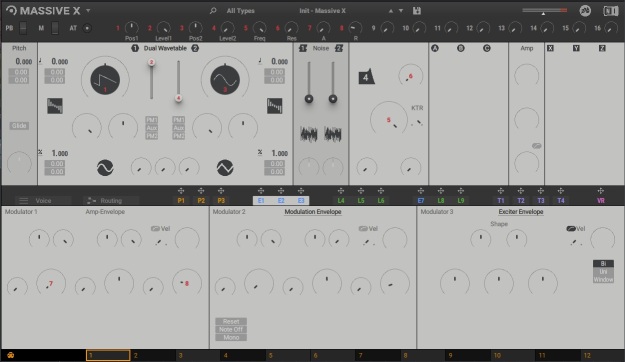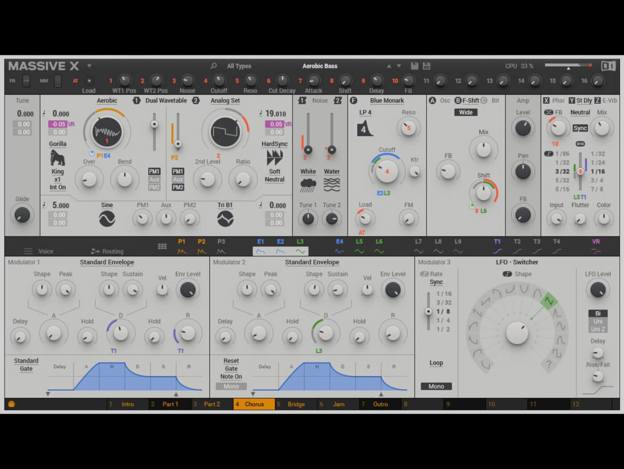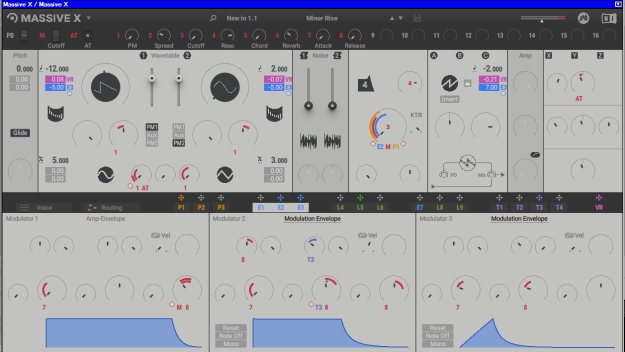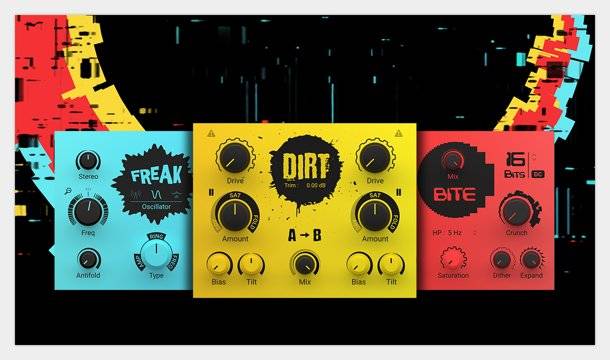I have written previous posts concerning some of the new Native Instruments products and the issues I have had with their GUI. Lately I have discovered that I am not alone in this.
Massive X, the intended modern classic of soft synths, was supposed to come out along with Kontakt 6, but then only some spec images were actually available. After six months of further developing, Massive X was finally released only to be revealed that its GUI problems were the most extensive ones in the NI lineup so far.
Just think about this: on the the bottom of the official NI Massive X website there is currently (October 2019) a link saying “we want to hear from you” that reroutes users to NI support forums. Following the link it soon became evident that I was not the only one with this kind of GUI in my DAW:

Just for comparison, below is what the Massive X GUI should apparently look like:

Following the NI forum threads one can quickly see that a huge number of Massive X users – myself included – have most of their GUI completely missing. Also, this has nothing to do with Nvidia drivers or the specific OpenGL version users have on their workstation. The issue is a larger and fundamental one by nature, and it goes right down to NI methods of rendering any graphics in their new products.
None of my other plugins or VST instruments currently give me any kind of trouble – it’s strictly Native Instruments only. As mentioned earlier, I piled up 6-7 random plugins with moving graphics by other vendors literally on top of each other as a test and ran them all: no issues. Also, the new Abbey Road Studio 3 plugin by Waves Audio includes rotating animation of the actual studio as well as camera-guided real-time head movements, and my workstation has no trouble dealing with it.
All this should finally ring the alarm at the NI headquarters, where there seems to be people completely unable to lead software development projects. I mean what kind of an audio product company misses several deadlines and eventually puts out releases with completely flawed and unusable GUI?
Magazines like Computer Music are already releasing their Massive X tutorials and such, but Computer Music actually reviewed Massive X only in their fall 2019 issue. As the review had it, the GUI is still half-baked, and I assume they somehow had themselves the latest, more or less fully working version. Even they could not try out the Massive X standalone version, which seems to be completely shelved at the moment (October 2019).
As I write this, on the NI forums there is a plea for more people to join their beta program in order to get the 1.1 update ready as soon as possible. The reality is however that the upcoming 1.1 version of Massive X should have been the very first public release available for customers. Everything before that has actually been like it’s a beta program. A lot of people have been waiting for a whole year wondering what’s the matter with their workstation when the real reason for their problems is in the actual product. And what is perhaps most alarming is that if NI is still at this point of development looking for feedback through testing, they basically have no clue about the core issue.
As a conclusion, the Massive X botched release is definitely the biggest fuck-up I have ever seen when software synths or virtual instruments are concerned. And as I mentioned, I’ve only seen about one third of it all because of the deeply flawed GUI of Massive X.
The irony of it all? I am yet to read anything negative about the Massive X audio capabilities. It’s just that most of us cannot access them.






